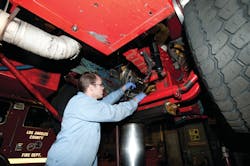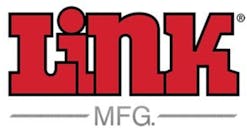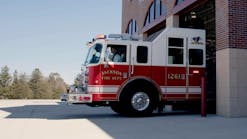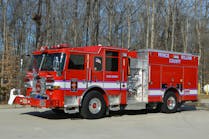When it comes to fire apparatus maintenance issues, you would be correct to think that equipment required for emissions standards was challenging. You would also be correct to think that aging apparatus is causing headaches, but one of the biggest issues may be surprising.
Fire departments from coast to coast are having trouble finding qualified mechanics to work on fire apparatus and do so competently. There is a shortage of heavy-equipment mechanics and the few out there often migrate to the private sector for more pay and better benefits. If you are a shop manager or a chief officer, that news probably is not surprising, as it has been an issue for a few years.
“Across the board, the number-one maintenance issue for us is having a qualified pool of maintenance mechanics,” said Division Chief Craig Weeks, the head of Fire Fleet Services for the Los Angeles County, CA, Fire Department, who oversees a staff of about 50 mechanics. “Without a doubt, that’s the biggest issue.”
Firehouse® Magazine interviewed mechanics and fleet maintenance personnel around the country to learn about the challenges departments are facing to keeping their rigs on the road. In addition to Weeks, for this roundtable we talked to Mike Stankus, maintenance manager for King County Fire District 44, near Seattle, WA; Tyler Chambers, the lead mechanic for the City of Tulsa, OK, Equipment Management Department working for the city’s fire department; and Bill Miller, the certified Emergency Vehicle Technician (EVT) for the Wellesley and Westwood fire departments in Massachusetts and president and treasurer of the New England Fire Apparatus Maintenance Association. While each man cites issues particular to his department, they agreed that keeping apparatus in top-notch repair, done by top-flight mechanics, is their most important mission.
MIKE STANKUS
For the past 35 years, Stankus has been a mechanic and welder and is part of the rarified club of Master EVTs with designs on achieving certification in each of the EVTs disciplines. In 2007, he was named the nation’s EVT of the Year. These days, he responsible for maintaining apparatus and equipment in eight station which includes 18 pumpers and tenders, two rescue units, three brush units, four cars, a boat, an all-terrain vehicle (ATV) and other equipment. Some of the biggest challenges he faces are presented by new apparatus that comply with the 2010 federal emission standards.
“The emissions systems are causing a lot of problems for a lot of departments,” said Stankus, who is also the chairman and education coordinator for Washington Fire Mechanics. Ironically, just as departments are becoming accustomed to working with emissions equipment and its maintenance, Stankus said he is hearing the feds are thinking about retracting the emissions standards and he wonders what that means for the fire service.
“We went down that long road to compliance; now, how are we going to go backwards,” Stankus asks rhetorically. “…It’s kind of mind boggling.”
While he is generally an advocate of high tech for apparatus, when it is not working right, it can cause headaches. He has had a few issues with multiplex electrical systems on apparatus, but nothing too serious and the issues have been easily remedied. (In one case, a speedometer jumped from 60 to 90 mph while the vehicle was not moving.)
Sometimes, it just takes a little patience on the operator’s part for the apparatus to catch up. “It’s just like when you boot up a computer, you have a wait a minute,” he said. “Apparatus today are filled with lots of computers and to start one and take off ‘prematurely,’ it can cause problems with shifting and with anti-lock braking systems. I get calls saying the truck won’t shift and I have to tell them to relax, shut the truck off and restart, waiting 45 seconds to a minute for the computers to boot up and everything will be OK.”
Stankus said he is an advocate of standardizing fleets and over the nine years he’s been with King County, he’s had success with his goal. “It’s very important to me for service and for parts interchangeability,” Stankus said.
Regular, routine maintenance is also vital, he said, adding that his regimen includes full service every 250 hours or 3,000 miles, whichever comes first. “We do a thorough annual on each apparatus too,” Stankus said. “We want to make sure everything is OK.”
A tag line on Stankus’ emails reads: “We might not be the pride of the fire service, but without us, the pride don’t ride.” And that sums up his philosophy on apparatus maintenance.
CRAIG WEEKS
Weeks has been with the Los Angeles County Fire Department since 1994. He remembers the day when there were literally dozens of applicants for a half-dozen openings in fleet maintenance. Today, the department may not have more than a handful of applicants for a like number of openings.
“It takes us quite a long time for us to promulgate a list of five or six qualified candidates,” Weeks said. “…Nearly everywhere around here are help-wanted signs for technicians.”
Weeks draws a similarity between the crush for computer-savvy people a couple of decades ago and the need for technicians today. He is also hoping the parallel continues and the reverse happens with a glut of technicians as the market shifts so fire departments can have a selection and pick the best and most qualified people to work on apparatus.
In his shop, there are 50 technicians and there often are needs for new technicians. That’s why the department developed a relationship with the community college program to recruit technicians. He hopes to renew that program in 2013. He will need the help to keep the department’s 1,700 pieces of rolling equipment maintained, including at least 600 primary apparatus.
“Everything that is one ton or less we contract out…but we still have a lot of work,” Weeks said, noting that everything else is done in house.
Unlike some departments, Los Angeles County is not experiencing headaches with emission systems and he can attribute it to a decision the department made that has paid off.
“We opted for smaller-displacement engines with higher horsepower,” Weeks said, explaining that the engines run faster and at higher temperatures, which makes for fewer regenerations and happier emissions systems. “We’ve had no, major, complex problems.”
The only thing that has become a chore is the distribution and tracking of the Diesel Exhaust Fluid (DEF) for his large department. “We’re trying to get accountability and control over DEF distribution,” he said.
Weeks is not a fan of multiplexing for apparatus and he avoids it whenever possible. Specifications for new apparatus specifically say no multiplex electrical systems, except where absolutely necessary for engine and transmission controls.
“We need to be able to diagnose and repair apparatus that may be three or four miles off the highway,” Weeks said, noting that some wildland strike teams travel up to 500 miles, a long way from their home repair shop, to fight wildland fires.
With the ability to go out to bid for as many as 15 apparatus at a time, Weeks said he has not had problems with manufacturers balking at the no-multiplexing request. “We have a little more leverage than most,” he said.
Another specification Weeks requires on apparatus is complete accessibility to all parts that may need serving or replacing. He does not want to spend a half-day in the shop taking off panels and components just to fix a minor issue. “If an item is not completely accessible, it doesn’t belong on our trucks,” he said.
Getting the right apparatus up front can save a lot of maintenance down the road, Weeks said. That is why he has been working on ways to reduce the amount of heat generated by apparatus, rather than worrying about heat rejection. He has noticed that cabs are getting bigger on apparatus with little or no room going to the occupants. Rather, it is going for bigger radiators and heat-mitigation systems.
“I am going about it a completely different way, trying to reduce heat,” Weeks said. One way he has hit upon is an unconventional transmission specification which calls for a 10-speed automated transmission as opposed to a full automatic transmission, which generates heat that is cooled by the radiator system.
“They’ve been working great,” Weeks said, noting that the transmissions are full controlled electronically so they operate much like a traditional automatic transmission for the user.
Weeks has found tremendous savings with tires too by using recapped tires for apparatus. In 2010, the department saved $400,000 in the tire budget alone. There was a time when retreaded tires were shunned by the fire service, but Weeks said his department uses Michelin tires exclusively and department officials went to the factory and learned that the same compounds used in new tires are used in recapping retreads.
“We use the casing up to four times before we discard them,” Weeks said. “They’re really good and unless you really look, you can’t tell them from brand-new tires.”
For Weeks, apparatus maintenance today is all about being resourceful and looking for ways to save money, but never compromising safety.
“To me, apparatus are not parade pieces, they’re not showpieces,” Weeks said. “Everything on an apparatus needs to serve a mission to the community.”
TYLER CHAMBERS
Just about in the center of the country, Tyler Chambers is the civilian lead mechanic for the fire department’s division of Tulsa’s fleet service. He too has a challenging time finding top-flight EVTs. Moreover, city officials are not sold on the fact that it is necessary to have certified EVTs. “They think it’s more of a voluntary kind of thing,” Chambers said, adding that the fire department is all for having certified EVTs working on rigs.
When he comes up with qualified heavy-equipment mechanics, they are often stolen away by another department in the city or other agency. “Yes sir, it’s a problem,” Chambers said. In his shop of seven, just he and one other person are EVT certified.
“Trucks these days are so complex that sometimes when we get mechanics in here they don’t have a clue how to work on a fire truck,” Chambers said, noting that he is a strong advocate for EVT certification, something he had for decades, and preaches to its merits whenever he has a chance.
Even more of a challenge is high mileage being put on fire trucks in Tulsa.
“The major trouble we have is an increase in call volume,” Chambers said. “The department has started to make medical calls (responding with a private ambulance company). That has doubled the miles on the trucks.”
Chambers said the extra mileage is taking a toll on the apparatus with increased frequency of brake jobs and general wear and tear. To save money on brake jobs, Chambers said Tulsa has started specifying trucks with electromagnetic brake retarders which has been hugely successful. “We’ve doubled the brake life on the trucks,” he said.
Tulsa also bought several mini-squads to handle the increase in ambulance call volume, he said, noting that the small trucks carry a bit of water and 250-gpm pumps that give some firefighting capabilities as first-responder units.
Finding a solution to resolving problems with engine performance hasn’t been as easy, Chambers said.
Low-sulfur fuel has been raising havoc with the diesel engine injectors, Chambers said, without offering a good solution to resolving the problem. “We’re just dealing with it,” he said.
When it comes to apparatus, Chambers, who supervises seven mechanics in his shop, it has to be right.
“People don’t realize that firefighters count on apparatus to work,” Chambers said. “They trust their lives, and the lives of people in the community, on them working as they should. We have an obligation to maintain that trust.”
BILL MILLER
Up in New England, Bill Miller has some different challenges. Salt, used for melting ice and snow, eats up apparatus, as do the short runs his suburban Boston department experiences.
Miller works full time for the Wellesley, MA, Fire Department, as the sole mechanic, a position he has had about three years and works part time for the Westwood Fire Department for more than 25 years. During those decades as a mechanic, he has learned the best way to get good service out of apparatus is to buy the heaviest-duty truck possible from a quality vendor.
“I tell people to buy trucks with big motors, thick bodies and heavy duty and they’ll last longer,” Miller said, noting they won’t be as difficult to maintain either. “I try to tell people that the $180,000, $190,000 trucks aren’t going to hold up and they’ll give you trouble over the years…The way we treat stuff in the fire service, it’s not conducive to long life anyway.”
Like the other mechanics mentioned, Miller is a strong proponent of EVT-certified people working on apparatus. “We need to work closely with the chiefs to help them understand the importance of certified technicians,” he said. Miller said he preaches safety and the need for certification in his capacity as the president of the 396-member New England Fire Apparatus Maintenance Association. The association hosts annual training in conjunction with the New England Fire Chiefs Association to make sure mechanics are up to speed on the latest information, techniques and equipment available.
And some of the latest technology isn’t the greatest, in Miller’s mind, particularly the 2010 emission standards. In his community, a long run is five miles on a mutual aid call to another community, which does not give apparatus time to heat up and do the passive regeneration trucks do as they drive down the road. That means the apparatus with the latest emissions equipment in his fleet have to have active regeneration requiring them to be run at higher rpm on the front apron for 30 to 40 minutes.
“That doesn’t make the neighbors too happy,” Miller said, adding the placement of the apparatus is also critical because the exhaust temperatures can get up to 1,500 degrees Fahrenheit. “So, that means you have to put cones up around the exhaust for seven or eight feet around it or someone can get burned. And, if you stop in the middle of the regen, you have to come back and do it again, or go for a very long drive.”
Then, the apparatus has to sit outside, for up to an hour to cool down before being housed and hooked back up to the station exhaust systems. Hooking up a station exhaust ventilation system to a hot truck can cause thousands of dollars in damage, Miller said. But, it is important to be done to the manufacturers’ specifications to keep apparatus running properly and well maintained.
For Miller, maintenance begins when the apparatus is specified. He recommends departments select manufacturers based on their service systems and their local inventory of parts and their availability.
Miller has a variety of brands of apparatus in the two fleets he maintains and each has its strengths and weaknesses when it comes to parts and service. Some make it easy for him to keep the trucks on the road and others take longer to get parts out to the field and the trucks back in service.
“When you are bidding a vehicle, check out the local dealer,” Miller said. “Do they have a full-service center, with a big inventory of parts, or are they working out of someone’s backdoor garage? It will make a big difference in the maintenance of your apparatus. You don’t want to find that the dealer you have been working with is out of business 15 years into your 20-year apparatus life cycle.”
Apparatus maintenance for Miller comes down to “do the right thing.” For instance, don’t do a one-wheel brake job on an apparatus to save money, he said. Keep good equipment in good repair and it will perform as it should for decades, he said.
“Don’t gamble with apparatus maintenance,” Miller said. “Because when you gamble, and lose, it really hurts.”

Ed Ballam
Ed Ballam served as associate editor for Firehouse. He is the assistant chief of the Haverhill Corner, N.H. Fire Department, and a National Registered EMT. He is also a Deputy Forest Fire Warden for the New Hampshire Division of Forests and Lands. Professionally, he's been a journalist for over 35 years working for a variety of publications, including employment as managing editor of a national fire service trade journal for more than a decade.






